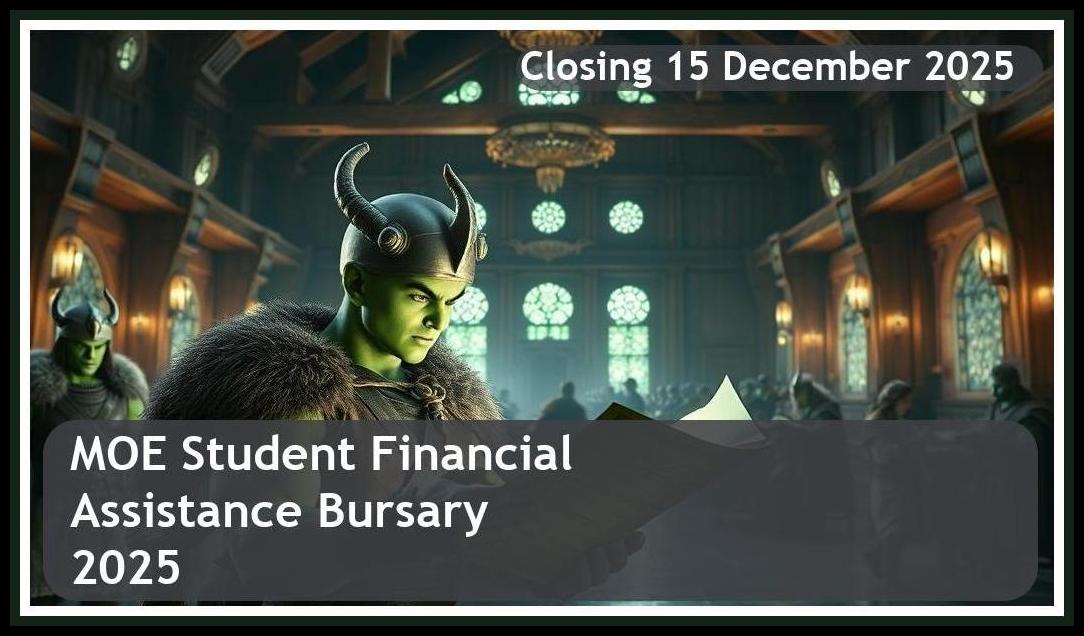
Hey Future Achievers! 👋 Ever wonder how some countries ensure every student gets the support they need to succeed? Today, we’re diving into some exciting news from Singapore’s Ministry of Education (MOE) about their fantastic financial assistance schemes!
While these specific updates are from Singapore, they offer a great look at how student aid programs evolve to help more learners. We’re talking about enhanced financial support that will benefit thousands more students from 2026, making education more accessible for everyone. Let’s break down what’s new and how it works!
What is the MOE Student Financial Assistance Bursary?
The MOE Student Financial Assistance Bursary (which includes various schemes like the MOE Financial Assistance Scheme, Edusave Merit Bursary, and Uplift Scholarship) is all about helping students cover their school expenses. Basically, if you’re a student from a lower to middle-income household, this program steps in to ease the financial burden of education, from primary school right up to university! The latest announcement brings awesome enhancements, expanding eligibility and increasing the support amounts, so even more students can focus on their studies without stress.
Who Can Apply?
Good news! The eligibility for MOE’s financial support is getting a major upgrade, meaning more students will qualify. Here’s the lowdown on the revised income ceilings:
- General MOE Financial Assistance Scheme: The monthly gross household income ceiling is jumping from S$3,000 to S$4,000. Plus, the per capita income ceiling (which looks at income per person in the household) is also increasing from S$750 to S$1,000.
- Edusave Merit Bursary: If you’re a top performer (among the top 25% of your cohort with good conduct), the income cap for this bursary is rising from S$7,500 to S$9,000.
- Uplift Scholarship: This scholarship, for high-achieving students from lower-income families, will now accept students from households with income up to S$5,500 (up from S$4,400).
These revised limits apply across the board, from government schools to independent institutions and even post-secondary education!
What Does It Cover?
Get ready for some serious financial relief! The MOE support isn’t just a small handout; it’s comprehensive:
- School Fees & Essentials: You’ll continue to get subsidies for school fees, textbooks, uniforms, and even meals.
- Transport Costs: This is a big one!
- Primary school pupils will see their school bus subsidy increase from 65% to 70%.
- Monthly public transport subsidies for primary and secondary students are going up from S$17 to S$21.
- Pre-University Support: Annual bursaries for pre-university students are boosting from S$1,200 to S$1,600, with transport subsidies now included in this higher amount.
- Uplift Scholarship: The annual amount is increasing from S$1,000 to S$1,200.
- Post-Secondary Institutions (ITE, Polytechnics, Universities):
- Full-time ITE students from the lowest income tier (up to S$4,000 monthly household income) will get their tuition fees fully covered PLUS a cash bursary of S$1,850 (up by S$250!).
- Full-time polytechnic students in the same income tier will see their bursary rise to S$3,050.
- Middle-income ITE and polytechnic students (gross household income S$4,001 to S$12,000) can receive between S$490 and S$2,700.
- Part-time students are also getting more support, with bursary amounts increasing by S$30 to S$250.
- Medical and dental undergraduates from lower-income families will have their out-of-pocket tuition fees capped at no more than S$5,000 a year after bursaries.
- ITE Community Scholarship: The cash award for this merit-based scholarship is increasing from S$1,800 to S$2,050 per year for top-performing ITE students.
How to Apply?
Applying for this awesome support is getting even easier! From January 2026, MOE and post-secondary institutions are rolling out the Household Means Eligibility System (HOMES). This clever system will automatically pull household income data from government sources, meaning most applicants won’t even need to submit a ton of documents! It’ll also use your average income over the past 12 months for a fairer assessment.
While this particular set of enhancements primarily benefits students in Singapore, the principle of making education accessible is universal! If you find yourself in a similar situation, remember to check with your educational institution for any specific application details or the official MOE Singapore website for the latest updates. Keep an eye out for application periods, typically announced by the institutions themselves for the academic year.
Isn’t it inspiring to see governments investing in their students’ futures? While the MOE Student Financial Assistance Bursary is for students in Singapore, it highlights the importance of seeking out educational aid. If you’re a South African student looking for similar opportunities, don’t miss out — apply now for relevant bursaries and explore many more funding options right here on Bursaries Room!